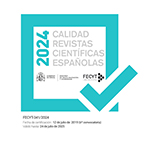The building in the novel: Persistence and metamorphosis of a figure in Morante’s Aracoeli
Abstract
The essay investigates the function of architectural images (public or private buildings, interiors of houses, terraces, villages and urban conglomerates) in Elsa Morante's latest novel, Aracoeli (1982). Starting from the observation of the persistence of such images in this author's writing, it questions the sense that they assume in the work considered by many critics as the palynodia of the previous artistic path. The architecture is interpreted – with Francesco Orlando – as a complex figure, which simultaneously recalls the material (and historical) aspect of the extra-textual world and the artistic form that recomposes it (Morante's comparison between the novel and the cathedral is famous). They thus reveal themselves as formations of compromise between the referential and poetic spheres, between the constructive thrusts of form and the need to confront an exterior that increasingly refutes its order. It is precisely in the ambiguity that characterizes them that such figures can become the key to reading Morante's latest novel as the final battlefield between compositional will and destructive tensions and not a total surrender to chaos, nor a unilateral euphoric expression of a liberation from form.
Downloads
Article download
License
In order to support the global exchange of knowledge, the journal Cuadernos de Filología Italiana is allowing unrestricted access to its content as from its publication in this electronic edition, and as such it is an open-access journal. The originals published in this journal are the property of the Complutense University of Madrid and any reproduction thereof in full or in part must cite the source. All content is distributed under a Creative Commons Attribution 4.0 use and distribution licence (CC BY 4.0). This circumstance must be expressly stated in these terms where necessary. You can view the summary and the complete legal text of the licence.










